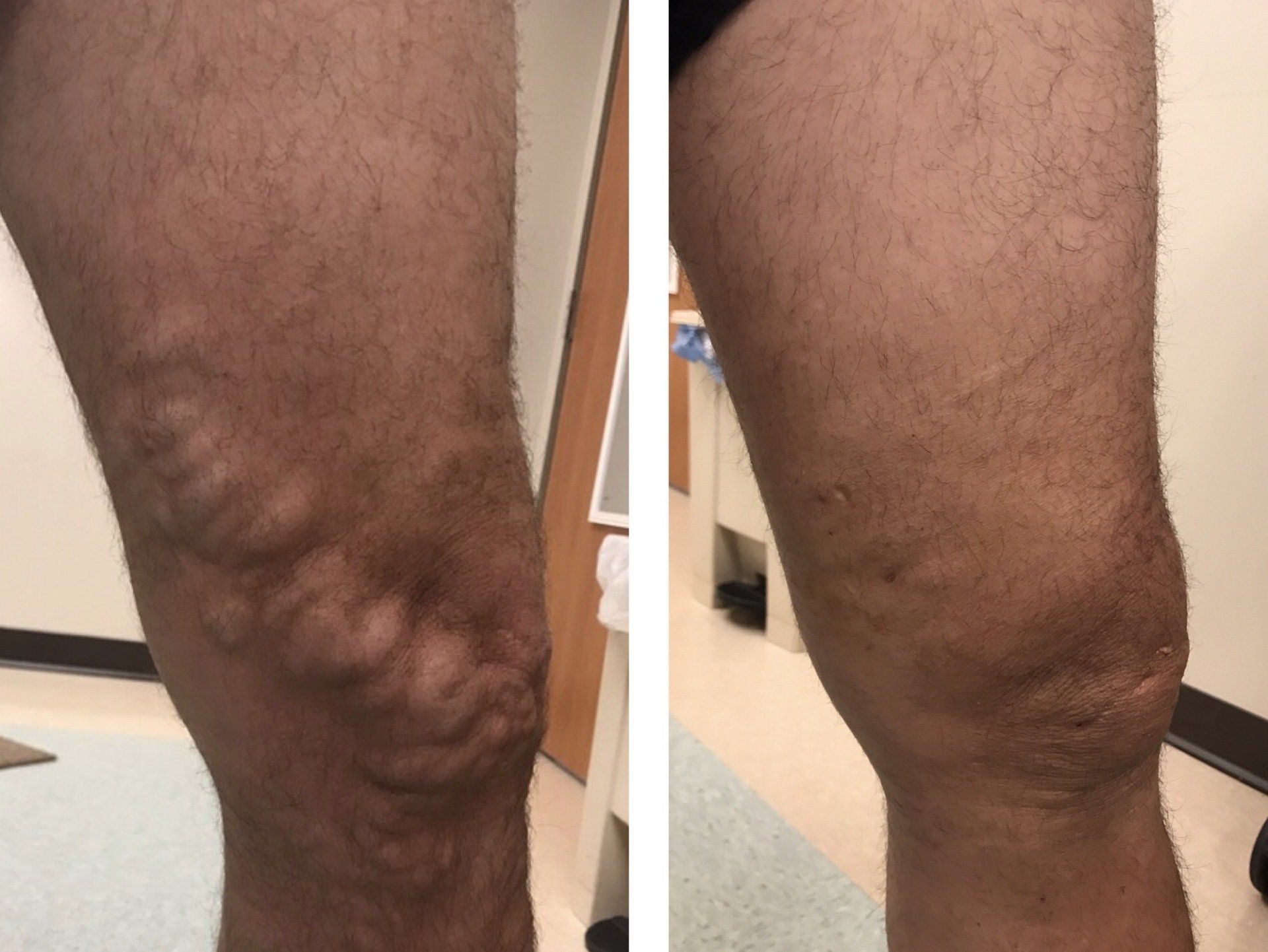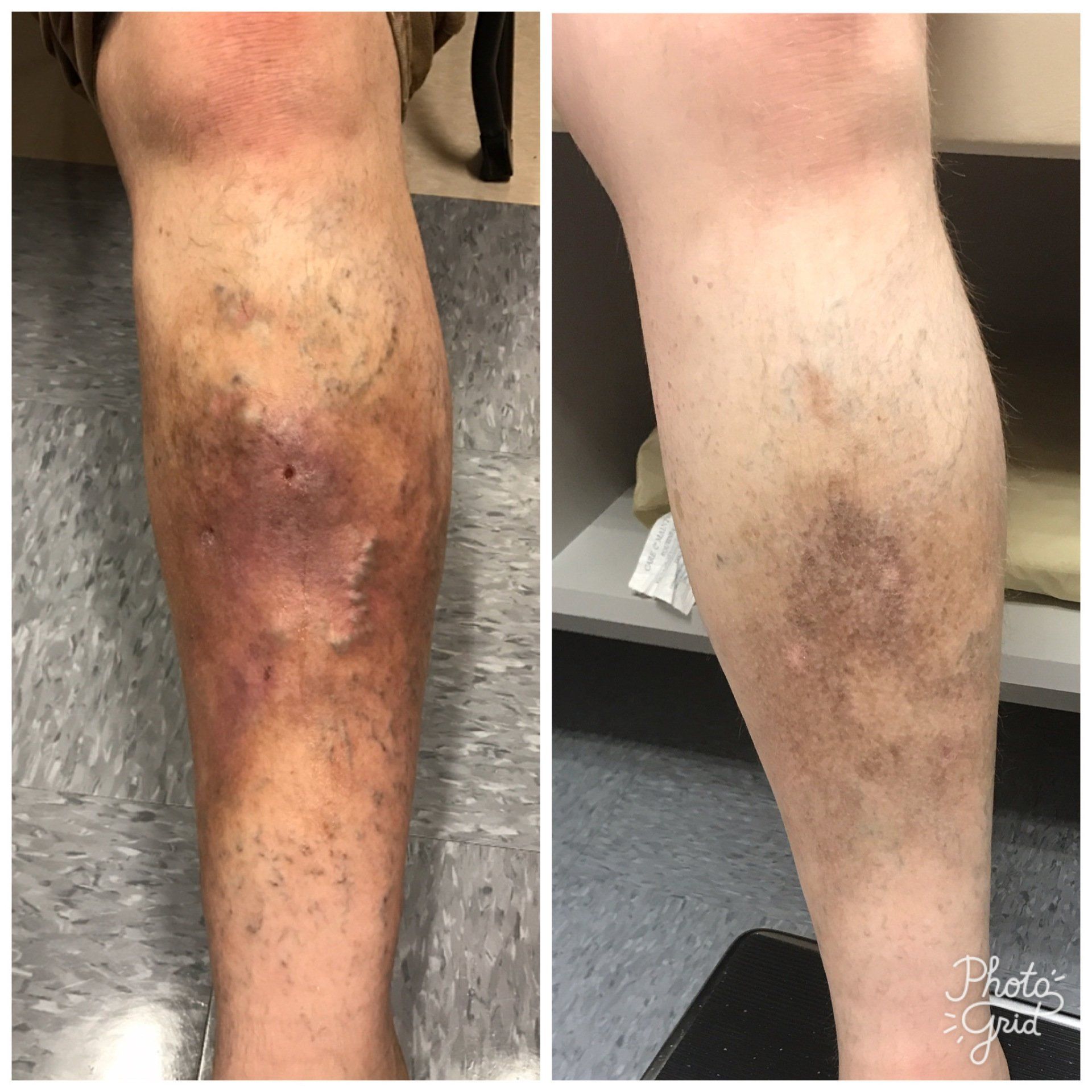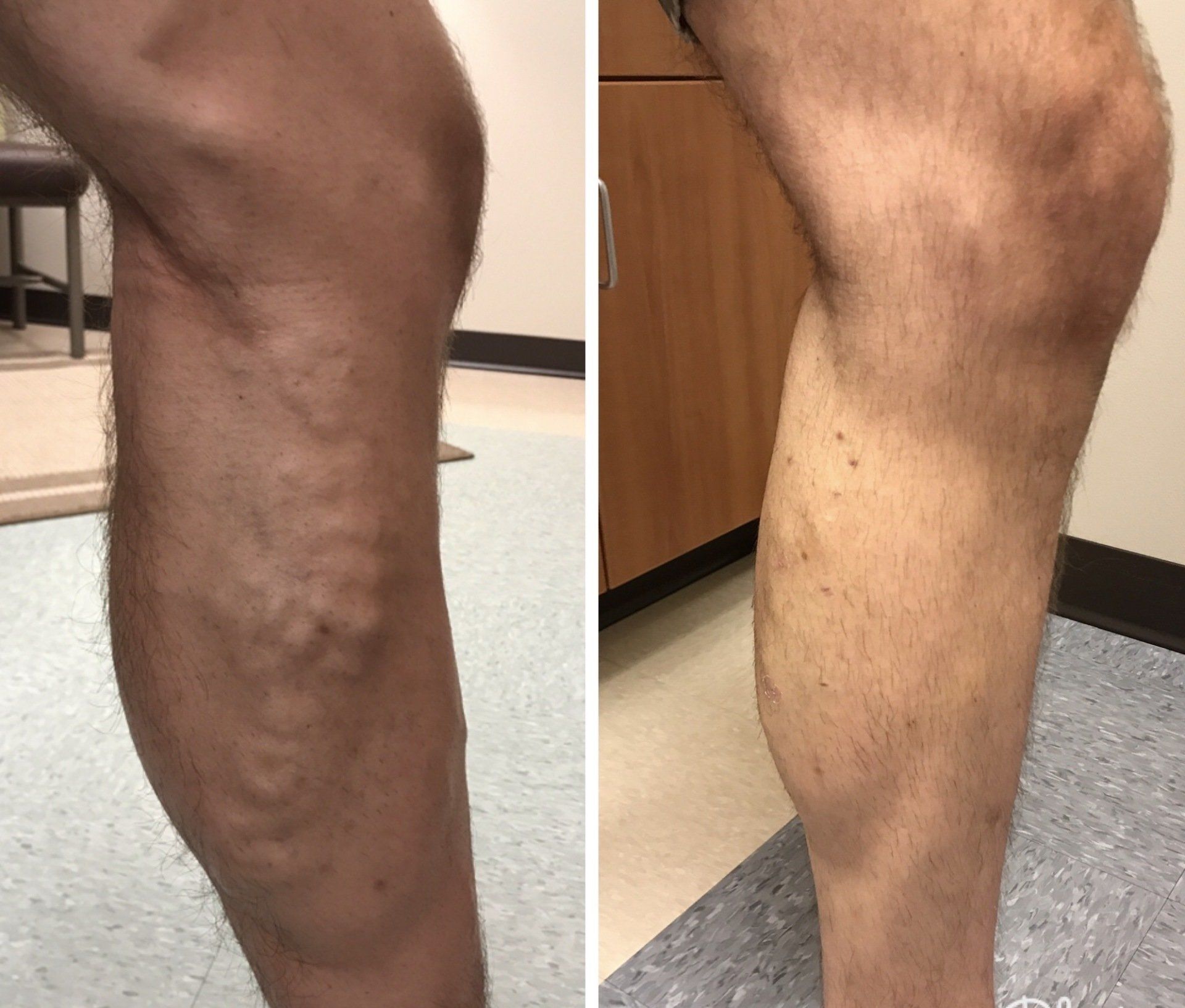Vein Treatment

Vein Troubles?
Venous insufficiency is a common condition where weakened vein valves in the legs lead to poor blood flow back to the heart, causing blood to pool. This results in varicose veins, which are swollen, bulging vessels. Commonly caused by reflux in the great saphenous vein, this condition affects nearly half of the U.S. population, with visible varicose veins present in 20-25% of women and 10-15% of men. It's especially prevalent in adults over 50. If you're experiencing symptoms, seek evaluation for effective treatment options.
What To Expect
Signs & Symptoms
- Varicose veins
- Aching or pain
- Swelling
- Cramping
- Heaviness or tiredness
- Itching
- Restlessness
- Skin changes
- Brown, colored skin
- Open sores or ulcers
Initial Consultation
During your initial consultation for venous insufficiency, our specialists will review your medical history and symptoms to assess your condition. We will conduct a physical examination and may perform diagnostic tests to determine the severity of your vein issues. We'll discuss your treatment options, answer any questions, and create a personalized care plan to improve your vein health and alleviate symptoms.
Treatment Plan
During your visit for venous insufficiency, we will start with a comprehensive evaluation, including an ultrasound to assess your veins. We'll then discuss the results with you and create a personalized treatment plan. If VenaSeal or Vein RFA is recommended, we will schedule these procedures. After the main vein is treated, a follow-up ultrasound will confirm the results and determine if additional treatments, such as Varithena, are needed. Our goal is to provide effective and tailored care to improve your vein health and overall well-being.
Post Treatment
After treatment, it's important to follow your post instructions to ensure a smooth recovery and effective treatment. Monitor the treated area for any signs of infection or complications. An Ultrasound will be scheduled to follow up after procedures. For any concerns or unusual symptoms, please contact us.
Please see each procedure explained with discharge instructions below.
Venaseal
The Venaseal procedure by Medtronic is a minimally invasive treatment for venous insufficiency that aims to relieve symptoms like varicose veins and improve blood flow in the legs. You'll be positioned comfortably on the procedure table; your leg will be cleaned from groin to foot. The physician will look at your vein under ultrasound guidance, an area will be numbed, and a small catheter is inserted into the diseased vein. This catheter delivers a medical adhesive (Venaseal™ Closure System) to seal the vein. The adhesive is carefully injected along the length of the diseased vein. It effectively closes the vein, redirecting blood flow to healthier veins nearby. Once the procedure is complete, the catheter is removed, and a compression dressing is applied for a minimum of 24 hours. Symptoms such as pain, swelling, and discomfort caused by the venous insufficiency should improve significantly within a couple months. Please see post procedure instructions below for reference.
Vein Radiofrequency Ablation (RFA)
The Vein RFA (Radiofrequency Ablation) procedure by BD is a minimally invasive treatment for varicose veins and venous insufficiency. You’ll be positioned comfortably on the procedure table. You'll be positioned comfortably on the procedure table; your leg will be cleaned from groin to ankle. The physician will look at your vein under ultrasound guidance, an area will be numbed and a small catheter is inserted into the diseased vein. You will encounter multiple little sticks up the leg to numb around the entire vein. A thin catheter is inserted into the diseased vein, this catheter emits radiofrequency energy, which heats and seals the vein wall. As the catheter is slowly withdrawn, it heats the vein wall to a precise temperature, causing the collagen in the vein wall to shrink and the vein to close. Once closed, blood naturally reroutes to healthy veins, improving circulation and reducing symptoms like pain and swelling. Once the procedure is complete, the catheter is removed, and a compression stocking is to be worn 48 hours straight, then 5 days during your waking hours for a total time of 1 week. Symptoms such as pain, swelling, and discomfort caused by venous insufficiency should improve within a couple months. Please see post procedure instructions below for reference.
Varithena
Varithena is a minimally invasive procedure used to treat varicose veins caused by venous insufficiency. You will lie comfortably on a procedure table, and the area to be treated will be cleaned. Using ultrasound guidance, your doctor will inject Varithena foam into the affected vein using a very small needle. This foam is made up of a medication that collapses and closes the diseased vein. Varithena works by displacing blood within the vein and causing the vein walls to stick together. This process redirects blood flow to healthier veins. Once the procedure is complete, the needle is removed, and you will need to pump your foot as if you are pressing up and down on a car brake. A compression stocking will then be placed on your leg and worn 48 hours straight, then 5 days during your waking hours for a total time of 1 week. Over time, the treated vein will shrink and disappear. Symptoms such as pain, swelling, and discomfort caused by the varicose vein should improve significantly. Please see post procedure instructions below for reference.





